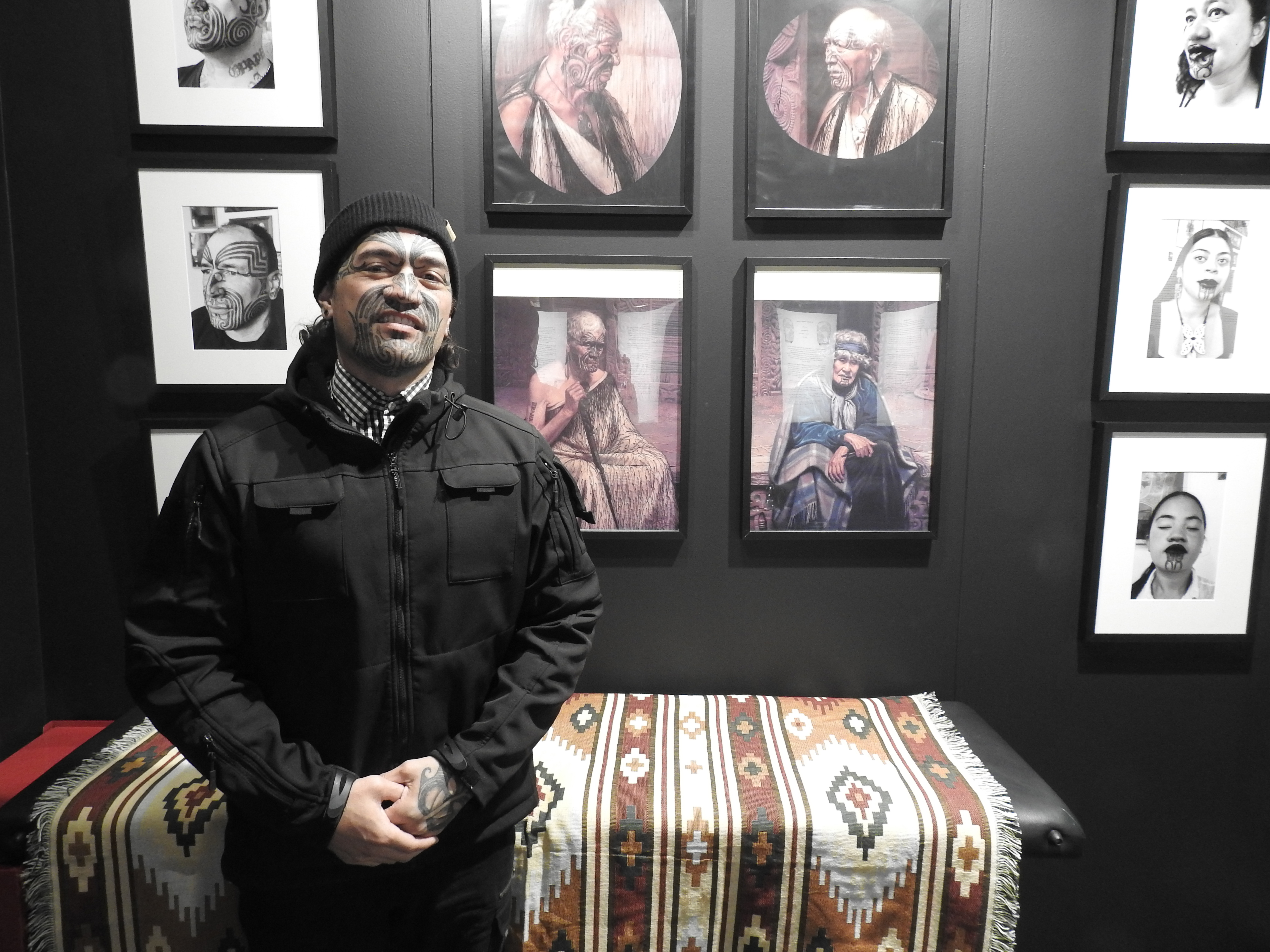Sharing the art of tā moko

Living art: Wharerangi Turnbull has an exhibition on that explains and demonstrates the practice of tā moko. Photo Kathy Forsyth E5582-01
News Editor
Wharerangi Turnbull is thrilled to be showcasing his tā moko practice at Te Kōputu a te Whanga a Toi – Whakatāne’s library and exhibition centre.
Turnbull said the exhibition was an opportunity to share the art of tā moko and educate the wider community about its depth and meaning.
His exhibition, Rarohenga, is his first public display and offers more than just images of his work. It includes detailed information and reflections he has written about the origins and significance of tā moko – creating a space for learning and connection.
“The exhibition walks people through the origins of moko – where it came from, why it's important, and how it guides the way we live our lives,” he said. “You’ll find pūrākau (traditional stories), lessons, and guiding principles; it is a way to conduct yourself.”
A highlight of Rarohenga is Turnbull’s live tā moko sessions, where he tattoos people in the gallery space.
“I bring people into this space, I take them through my process, just talk to them, try and capture their story, and then turn that into a design that gets marked into their skin.”
Visitors can watch the process, usually on Wednesday, Thursday, or late Friday mornings.
Turnbull describes tā moko as a living art form.
“It’s not something you hang on a wall – it’s carried by people, walking around with their story.”
That’s why it’s important to work in a space where others can see it being done and understand its meaning.”
Moko, he said, was deeply personal.
Each design captures a person's” kōrero – their life experience, the family they come from, or the family they’re building”.
“They come to me with their story, and I use my knowledge of moko, the designs and patterns and turn their story into a design and apply it to their skin.
“That is the most important part, capturing their story. It is no good doing something pretty that doesn’t mean anything, you have to capture their korero and turn it into something meaningful. Because it is something they are going to walk around with for the rest of their life.”
He believes the resurgence of moko reflects a growing embrace of Māori identity.
Younger generations want to see themselves in their world.
“When they see moko, it speaks volumes about being Māori.”
But it’s not just about the look, he said, they need to understand the foundation it stands on.
Turnbull, from Rūātoki and of Tūhoe descent, has been practising moko for 14 years. He was drawn to it from a young age.
“I saw it growing up on people at home. But when I left, I hardly saw it anymore. It is an art form that resonated with me.”
He is part of the kaupapa-led Moko Ora collective alongside Te Wehi Preston – a network of tā moko practitioners from across the country who meet regularly to share and learn.
“We usually meet four times a year in open wānanga. Anyone can attend.”
Turnbull also works from his small studio in Tāneatua, where he serves his community, saying it is important to work where he has a connection with people and whenua.
Rarohenga is about protecting and honouring the integrity of moko, he says.
His role is to ensure people understand the deeper meaning behind what they’re receiving. “That’s how I protect the mana of this taonga.”
Rarohenga is on at the gallery at Te Koputu until September 5, and runs alongside two other exhibitions, Sarah Hudson’s The Stones Remember, and group exhibition, He Tāwharau Mataatua.
Caption
What: Rarohenga tā moko exhibition by Wharerangi Turnbull
Where: Te Koputu a te Whanga a Toi – Whakatane Library and Exhibition Centre
When: Until September 5
Alongside: The Stones Remember by Sarah Hudson and group show He Tāwharau Mataatua